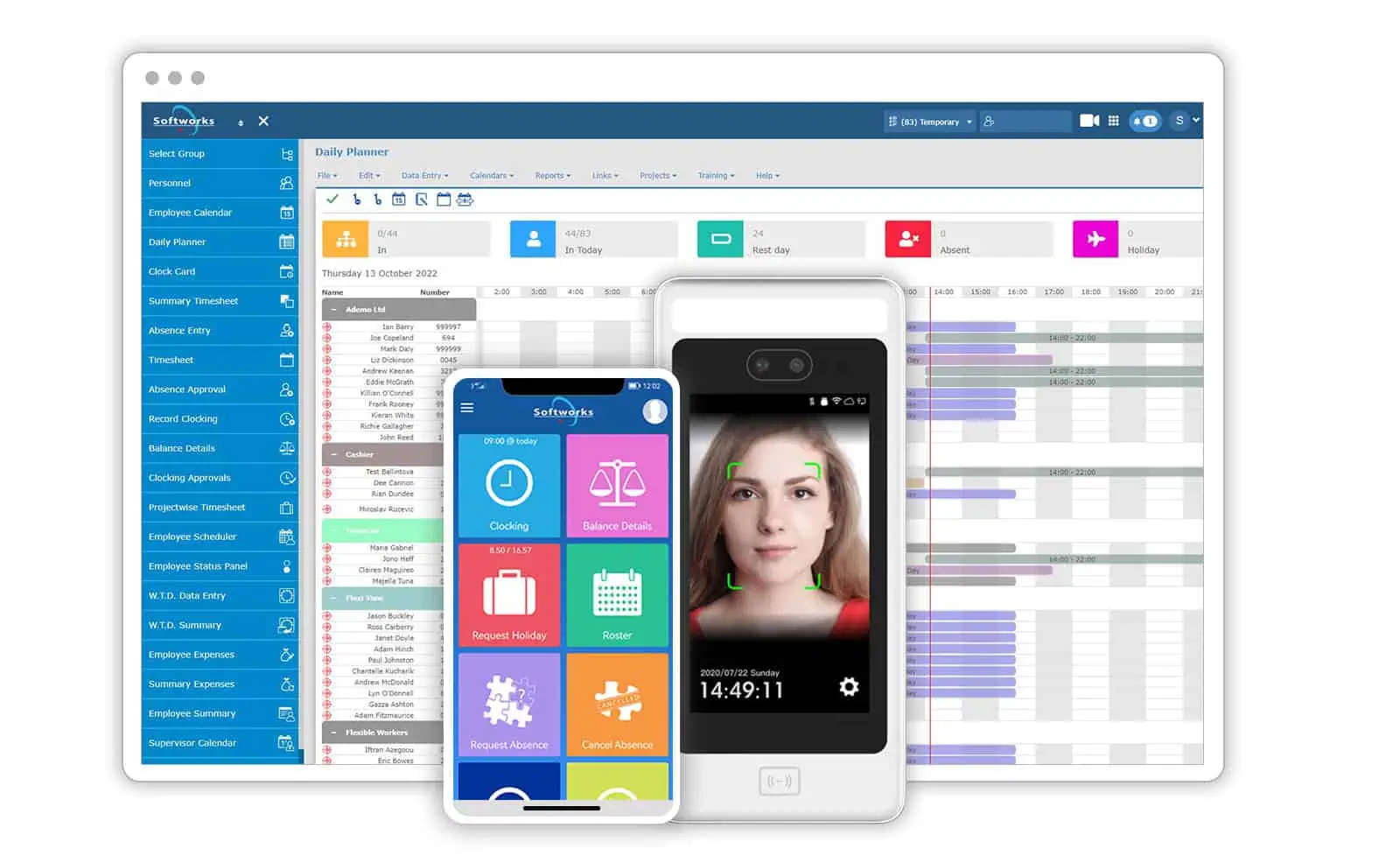Employee scheduling can be a time-consuming and complicated process as managers juggle employee availability with expected demand and required service levels. Public sector organizations also face unique challenges that add to this complexity.
In this article, we discuss the challenges faced by public sector organizations when scheduling their employees and how Workforce Management Software can help streamline and automate the scheduling process for the public sector.
- What are the challenges faced by the public sector currently?
- What are the challenges of employee scheduling in the public sector?
- How do these challenges affect employee scheduling in the public sector?
- What are the consequences of ineffective employee scheduling in the public sector?
- What is Workforce Management Software?
- How can Workforce Management Software improve employee scheduling in the Public Sector?
What are the challenges faced by the public sector currently?
The challenges faced by the Public Sector have never been greater. Some of these challenges include:
1. Higher service delivery expectations
Citizens expect higher levels of service and increased availability of their public services in a move from government-first to citizen-first services but in many areas, budgets and employee numbers have not risen accordingly.
2. Increased accountability
Questions about policy decisions are more routinely discussed by the public and the media. Government ministers and department heads are being held publicly accountable for decision-making around the allocation of taxpayers’ hard-earned money.
3. Staffing challenges
From a staffing perspective, the public sector faces increased competition from the private sector to attract and retain employees while the increase in remote and flexible working is driving the need to improve information access for employees from anywhere.
4. Requirement for technology investment
In common with other sectors of society, the public sector is expected to enhance its services by embracing a digital service delivery model and using technology to improve operational efficiency, reduce costs and improve outcomes for its citizens.

What are the challenges of employee scheduling in the public sector?
Employee Scheduling in the public sector can be a complex and time-consuming task due to the following factors:
1. The need for 24/7/365 staffing
While many public sector organizations operate from 9 am to 5 pm Monday to Friday many such as police, emergency services, and healthcare require 24/7/365 coverage and to be able to prepare contingency plans for major incidents on a regional or national basis.
2. Skills-based employee scheduling
Whether working 9 to 5 or 24/7/365, public sector services often require a very specific mix of skills and job roles to ensure delivery of the expected services, as well as the ability to call on additional resources, should the need arise.
3. Union and regulatory requirements
Within public sector organizations, employee schedules can be bound by complex workforce rules, often consisting of multiple bargaining and union agreements. This is of course in addition to the standard regulations of the country such as working time legislation or health and safety legislation that must be adhered to.
4. Existing scheduling processes
Public sector organizations use a variety of tools to create and manage employee schedules. Many organizations still rely on paper-based forms, online documents and spreadsheets which are time-consuming, prone to error and difficult to adjust on the fly. Others may have a Time and Attendance system in place to record working time and employee attendance but have no way to use this information for scheduling purposes. Some public sector organizations may have invested in an employee scheduling system but it may be too basic to create and manage the complex skills-based schedules required by the public sector while taking union and regulatory requirements into consideration.
How do these challenges affect employee scheduling in the public sector?
The result of dealing with the challenges mentioned earlier
- The need for 24/7/365 staffing coverage
- Skills-based employee scheduling
- Union and regulatory requirements
- Existing scheduling processes
mean that scheduling in the public sector can be a complex, time-consuming process requiring manual intervention from managers. With the lack of visibility of skills and employee availability, it can be difficult to schedule in advance or to quickly adjust schedules to adapt to unexpected events such as illness or emergencies. Employees suffer as they don’t receive enough prior notice of their work schedule which makes it difficult for them to plan life outside work and contributes to employee dissatisfaction.
What are the consequences of ineffective employee scheduling in the public sector?
- Inability to deliver services
- Increased wage costs
- Workplace stress
- Increased absenteeism
- Increased staff turnover

Learn more: How to effectively manage employee scheduling?
What is Workforce Management Software?
Workforce Management Software is a type of technology used to optimize workforce planning, scheduling, and management. It is designed to help organizations efficiently allocate and manage their staff, as well as monitor and analyze workforce performance.
It helps employers eliminate manual processes and streamline and automate employee management tasks in the following areas:

How can Workforce Management Software improve employee scheduling in the Public Sector?
For public sector organizations to meet their challenges, they need to find ways to maximize operational efficiency and workforce productivity – while delivering excellent public service and ensuring employee satisfaction. This is where Workforce Management Software can help.
Workforce Management Software helps eliminate manual processes by allowing all schedules to be created in one central system which also contains all the HR information needed to build these schedules such as working rules and policies, employee working time, availability and skills.
Workforce Management Software can help improve employee scheduling in the following ways:
- Access to accurate employee information
- Skill and role-based scheduling
- Automated schedule creation
- Improved cost control
- Ensuring fairness
- Better employee experience
- Improved responsiveness
1. Access to accurate employee information
With Workforce Management Software, schedulers have one system with complete visibility of up-to-date information on employee working time, planned absences, skills and preferences instead of needing to gather information from multiple systems, forms, spreadsheets or departments to create schedules.
2. Skill and role-based scheduling
Workforce Management Software allows public sector organizations to track and manage employee skills easily. Schedules can then be created based on the required role and skills needed in a particular place at a particular time. The software will automatically present only those suitably qualified and available to be scheduled ensuring service and quality levels are maintained.
3. Automated schedule creation
Once the Workforce Management Software is configured to reflect the organizations’ unique working practices schedules can be automatically created weeks and even months in advance considering factors such as fairness rules, skills, availability, and regulatory and union requirements. This saves schedulers hours compared to more traditional methods.
4. Improved cost control
Automated scheduling reduces errors associated with manually prepared schedules. Managers can be confident that scheduling will be based on the requirements of the organization together with current staffing levels and contracts thereby reducing costs and the requirement for overtime.
5. Ensuring fairness
A common scheduling challenge faced by those responsible for creating schedules is making sure everyone takes their fair share of on-call, holiday, weekend and overnight shifts. Workforce Management Software can be configured to reflect fairness rules that have been agreed upon within the organization and to ensure each team member is treated equally. This reduces stress on those responsible for scheduling as they no longer need to work from memory about who worked on which shifts in the past and ensures fairness among team members promoting a more positive work environment.
6. Better employee experience
Schedules can be made available to employees as soon as they are finalized through the Employee Self-Service App available on desktop, laptop or smartphone eliminating the need for employees to be at work to view schedules on intranet, email or noticeboards. With greater visibility and control of their schedules, it becomes easier for public sector employees to juggle their work and personal lives leading to an enhanced employee experience, less absenteeism and more engaged employees.
The Employee Self-Service features of Workforce Management Software can allow employees to input their schedule preferences and limitations, such as their availability to work overtime or specific shifts so these can be considered when schedules are created, a key factor in improving employee satisfaction. Giving employees the opportunity to input into their work schedules reduces stress and burnout and improves retention rates.
7. Improved responsiveness
Workforce Management Software ensures that any staffing gaps that arise due to unexpected absences can be proactively highlighted and immediately addressed. Alerts using emails or notifications via Employee Self-Service App can be sent to any available and suitably qualified staff, asking them to fill the shift. These alerts can be configured to ensure they comply with your fairness rules and will be confined to only those employees suitable to work due to union and working time legislation. Once the employee accepts the shift and it is approved, the shift is officially scheduled and the employee’s work schedule is updated.

Summary
Effective employee scheduling in the public sector contributes enormously to organizational efficiency, cost management and employee satisfaction levels. Using Workforce Management Software with scheduling features designed for public sector organizations’ unique requirements transforms the employee scheduling process, delivering benefits such as easier and more efficient scheduling, enhanced cost control and improved employee satisfaction levels.








This article really highlights the importance of effective scheduling in the public sector. The use of workforce management software can significantly improve efficiency and reduce administrative burdens. I believe that implementing such solutions can lead to better service delivery for the community.